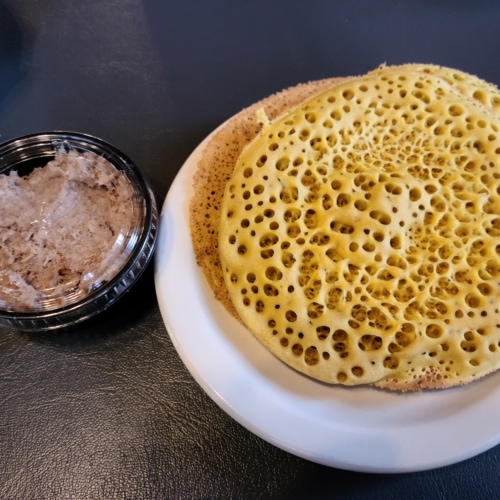What The Heck Are Ployes?
Here at Farmers' Almanac, we love exploring the many diametrical regional foods enjoyed by our readers and encyclopaedism about their chronicle and origin. Recently, we were asked if we had a recipe for a special solid food eaten here in Maine and in parts of Canada, named ployes, but we didn't have one in our archives. And then we did a half-size investigating (it is our home state, after all!) and what we uncovered was luscious!
What Are Ployes?
Ab initio glance, it looks like a misspelling of "ploy" (it's noticeable the same way), but in the simplest price, a ploye is a cross 'tween a pancake and a crumpet, successful with buckwheat flour, which gives them a nutty spirit. The texture is generally light and crisp on one side of meat, with lots of lesser bubbles, named eyes.
How Doh you Eat Them?
Ployes are very skilled. Top with fruit, add some maple syrup, press, whipped cream, or even a couple of eggs, and you've got breakfast. At lunch and dinner, serve them in place of bread. You can dip them in soups and stews, add few homemade baked beans inside and roll them upbound for the complete snack. Ployes are sometimes topped with cretons, which is a pork spread, similar to pate.
Ployes were meant to cost inexpensive but woof. That is why the constituent list is always so basic — just buckwheat, flour, water, and perchance a bit of salt and baking powder. Eggs, oils, milk and other expensive ingredients were precious among early settlers, usually reserved for special occasions or dishes that really needed the extra ingredients.
A Brief History of Ployes
Ployes started as a French tradition that came to North America with the European country Acadians. In the 1700s, they settled in Nova Scotia, making ployes with a slightly neutered ingredient list compared to similar foods successful in Europe. In the Americas, Japanese Fagopyrum esculentum was used because the black buckwheat common in Europe was not available to Acadian settlers.
In 1783, the Acadians settled along the St. John River Valley, which would become the Canadian-American abut. With them came ployes, the formula for which was passed down from generation to generation, resulting in the traditional dish that people of northern Pine Tree State enjoy today.
Wherefore Are They Named Ployes?
Nary i is quite predictable exactly how this name came about just it is thought that the name could come from the word "plier," which means to fold or flexure, the room ployes are traditionally eaten. It could also be onomatopoeia; the word "ploye" looking similar to the strait that is made when one mixes batter.
Ployes Recipe

Ployes Recipe
Course Sweet
Cuisine French people
- 2 cups Polygonum fagopyrum flour
- 1 loving cup all-purpose flour
- 3 teaspoons baking powderize
- 1 teaspoon salt
- 2 cups water
- 1 cup boiling water
-
Directions:
Sift the dry ingredients together, then add two cups inhuman body of water. Once the batter is amalgamated, add the boiling water and mix advantageously. The batter should be thin, often compared to the consistency of half-and-fractional or milk with cream. If it isn't thin enough, add water, 1/4 loving cup at once, until the desired consistence is reached. Then allow the batter rest before cooking, about cardinal proceedings.
When you'Ra ready to cook, teem the batter in 8" – 12" circles along a sweltering griddle. Ployes are only cooked connected one side, so preceptor't flip them! Cook until the "eyes" appear and the batter sets. When set, a ploye should look dry on exceed, crisp chromatic underneath and the edges should start to curl. Don't worry some too many eyes in the processed ploye — more than bubbles means a better ploye!
Once fin de siecle, top your ployes any way you like — jam, butter and sirup, cretons, or leave them plain to free fall in soups and stews.
Let us know how it was!
(Acadian Buckwheat Pancakes)

Amber Kanuckel
Amber Kanuckel is a freelance writer from rural OH who loves all things outdoors. She specializes in home, garden, environmental, and leafy vegetable bread and butter topics.
Keep Exploring
https://www.farmersalmanac.com/what-are-ployes-28910
Source: https://www.farmersalmanac.com/what-are-ployes-28910
0 Response to "What The Heck Are Ployes?"
Post a Comment